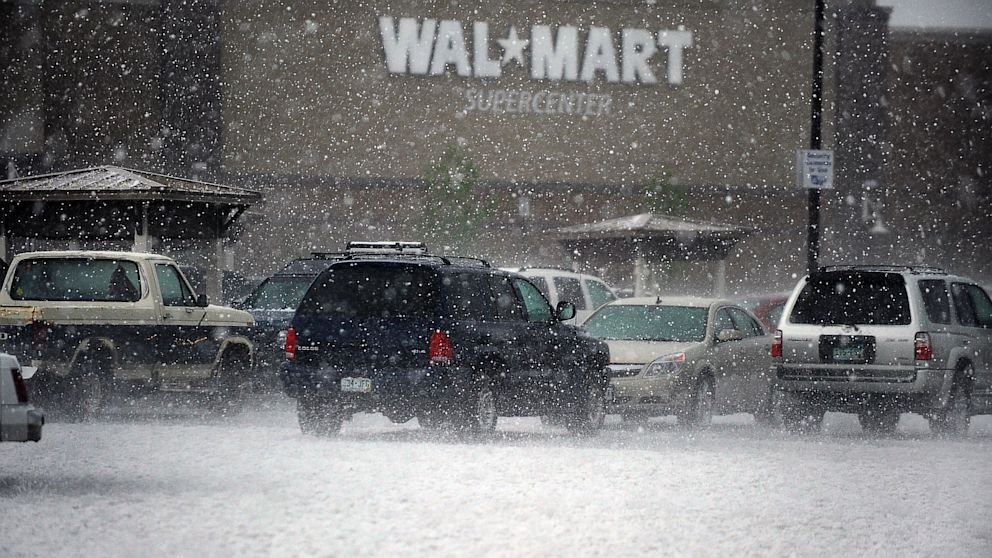Insurance Claims From Hail-Storm Damage Increased 84 percent in 2012 From 2010
As hail damage claims rise, the National Insurance Crime Bureau warns of fraud.

July 17, 2013 — -- intro: Insurance claims from hail-storm damage increased 84 percent in 2012 from their 2010 level, the National Insurance Crime Bureau reported on Wednesday. The agency warned against fraud related to contract work after storms.
There were 861,597 claims in 2012, up from 689,267 in 2011 and 467,602 in 2010.
Frank Scafidi, director of public affairs for the National Insurance Crime Bureau, which is based in Des Plaines, Ill., said the 84 percent jump in the two year span was the most startling finding of the analysis.
The bureau said the country has experienced severe storms -- wind, tornado, and hail -- that are occurring with more intensity and affecting more areas of the country.
The bureau doesn't specify why these storms are occurring but said the effects can be crystal clear: extensive property damage and the loss of life at times.
According to the National Oceanic and Atmospheric Administration, hail storms between 2010 through 2012 caused billions of dollars worth of damage across the country. In June 2012, an outbreak of storms in Colorado caused over $1 billion worth of damage.
Read More: Cars With Highest Theft Rates
Over two million hail damage claims were processed from January 1, 2010 to December 31, 2012. In that period, the top five states generating hail damage claims were Texas (320,823), Missouri (138,857), Kansas (126,490), Colorado (118,118) and Oklahoma (114,168).
Scafidi said the biggest takeaway for households is, "Not all roofs are made equally and not all storms will affect all homes in an area evenly," which sometimes can lead to fraud.
"Legitimate hail damage is covered by most property insurance policies but there are contractors—and homeowners—who will take advantage of an event—a hailstorm, for example—to have a full roof replaced when a minor repair was all that was necessary," he said. "That extra cost to the insurance company is fraud if it is done knowingly by the homeowner and/or the contractor—and that fraud is one of the factors that drive up the cost of insurance for all consumers.
If a homeowner seems a damaged roof, Scafidi says you should first call your insurance company and follow their guidance.
"There is no need to rush into an agreement with a contractor who shows up on your doorstep seeking your repair business," he said. "That unsolicited visitor might not have your best interests in mind when seeking your repair work, especially if you did not request their services. If you didn't request it, reject it, otherwise you might get scammed."
Here were the states with the highest number of hail claims in 2012:
quicklist:title: Texastext: 150,474
quicklist: title: Missouritext: 91,981
quicklist: title: Kentucky text: 72,585
quicklist: title: Indiana text: 59,827
quicklist: title: Coloradotext: 57,753
quicklist: title: Illinoistext: 52,765
quicklist: title: Oklahomatext: 48,573
quicklist: title: Kansastext: 42,453
quicklist: title: Tennessee text: 41,192
quicklist: title: Minnesota text: 33,337
quicklist: title: Nebraska text: 24,385




